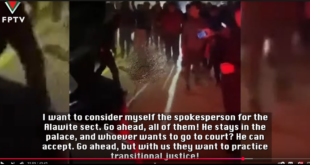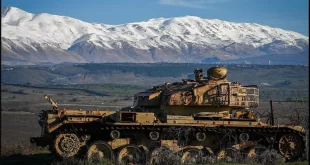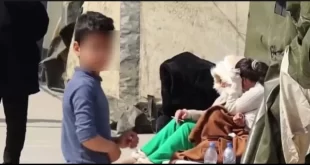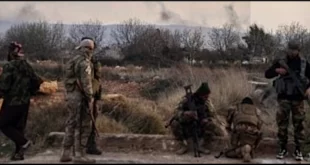May 23, 2014, Counter Punch
Visiting archeological sites in Syria over the past several months I seem to keep crossing some of the paths traveled by the field archeologist and later Colonel in the British Army T.E. Lawrence. There are plenty of still visible ‘Lawrence of Arabia’s’ footprints around Damascus and deep into Syria’s countryside including at the majestic 18th century residence of the Ottoman governor of Damascus Ad’a Pasha al-Azem. The Palace now houses the Museum of Arts and Popular Traditions. Most foreigners like to spend time at Azem and Lawrence was frequently there a guest of Emir Faisal, a son of Sharif Hussein of Mecca whose irregular troops Lawrence fought alongside while sabotaging the railway supply lines of the overstretched Ottoman forces and significantly contributing to their defeat.
As the Ottoman domination crumbled, in no small measure due to the Arabs revolt around Damascus, Lawrence tried in vain to salvage something for the Arabs whom he loved and admired even if he sometimes expressed his affection for them in an elitist English orientalist turn of phrase. By the summer of 1917, it had become clear to Lawrence and Faisal that the four century rule over Arabia by the Ottoman Turks was about to collapse thanks in no small part to the Arab revolt and their great bravery and massive sacrifices. It also became clear to him if not to his friend Faisal, who was a bit naive history records, that his country England, a pillar of the “Big Four” at the Versailles Peace conference which included the President Woodrow Wilson, British Prime Minister David Lloyd George, France’s Georges Clemenceau and the Prime Minister of Italy, Vittorio Orlando, was planning once again-and not for the last time- to stab the Arabs in the back and renege on the promises that Lawrence was commanded to deliver.
Photos of Lawrence and Faisal hang today on the walls of Lawrence’s bedroom and office at the Azem Palace and it’s clear from his facial expressions that Lawrence sensed what was coming to Syria and Palestine. Before he died at age 46 in a motorcycle accident having recently returned to England, Lawrence increasingly expressed what he considered his personal failure during the closing years of the war when told friends and family that he failed to convince his superiors in the British government that Arab independence was in their interests. The secret Sykes-Picot Agreement between France and Britain, according to Lawrence was an abject betrayal of the promises of independence he had made to the Arabs and for which he felt personally responsible.
I crossed paths again with Lawrence, in a manner of speaking, a few weeks ago at Palmyra archeological and UNESCO World Heritage site across the Syrian desert to the northeast of Damascus, recently liberated from islamist jihadists. It was there that I read his words on a plaque: “Nothing in this scorching, desolate land could look so refreshing…Moslem story-tellers ascribe the building of Palmyra to the Jinn commandeered by Solomon…” Frankly, I am reluctant to demure from Lawrence’s description, but since he spoke those words it has become clear that the “Tadmor” (Arabic and Hebrew name for Palmyra) referred to in the Torah is not the Tadmor of Syria but of another site now lost to the sands of Palestine if it ever existed at all. So Lawrence might be alarmed to learn that his words linking Palmyra to Soloman are being misused by Zionist cheap land seeking interests who now claim Palmyra in Syria as part of Gods claimed gift and to lend legitimacy for acquiring more Arab land for the ever expanding Eretz Israel. But the misuse of Lawrence’s quote at Palmyra for political purposes is a subject for another Syrian update.
Lawrence and myself crossed paths again in a manner of speaking on 5/15/14 during a six hour hiking and climbing tour of the medieval fortress known as Krac des Chevaliers (Castle of the Kurds- who reportedly first inhabited the area in the 11th century). The Syrian Arab Army recaptured the castle and the village of al-Hosn from rebel forces on March 20, 2014 after rebels (aka ‘takfiri terrorists’) had occupied both the nearby 10,000 inhabitant’s village and the fortress over the preceding more than18 months. The “Krac” was widely damaged by the military conflict including in August 2012, July 2013 and again on August 18, 2013. My excellent companion and government guide during my day at Krac was “Mohammad” a Syrian army security commander with 40 troops under his command and stationed inside the fortress to keep anyone from trying to retake it “by a nighttime sneak attack” I was told.
Apparently an history buff, Mohammad’s first comment as we starting to ascend the very steep three floors of medieval steps, often gazing at the marvelous Gothic ceilings as we made our way, was to quote, who else, but Lawrence: “We are walking in the footsteps of Lawrence who called this fortress “perhaps the best preserved and most wholly admirable castle in the world, and a castle which forms a fitting commentary on any account of the Crusading buildings of Syria”, Mohammad recited to my great surprise.
Many historians have agreed with Lawrence including Hugh Kennedy who wrote that “the defenses of the outer wall were the most elaborate and developed anywhere in the Latin east … the whole structure is a brilliantly designed and superbly built fighting machine.” Crak des Chevaliers is considered one of the greatest and best preserved castles in the world due to its unique architecture in terms of the defense facilities, building materials and decorations. In 2006, it was inscribed on the UNESCO List of World Heritage sites along with the Citadel of Saladin, its” sister fort” further north in Lattakia.
Among the more than 400 well documented damaged or destroyed antiquity sites in Syria that are more or less now under government control and so more or less available to researchers, Krac des Chevaliers is viewed by locals as a sort of ‘success story’ because for sure it is still standing and a major restoration project was launched in April following the forts liberation and well underway. This observer spoke with some of the fifteen full-time restoration specialists plus some volunteers who are doing the work as government officials including the Ministers of Culture and of Tourism drop by from time to time to encourage them and praise their work. Indeed on 6/1/14 a “Krak des Chevaliers reopening to the public’ event is scheduled at the fortress and the amazing site will soon be available to international tourists. Whether many tourists will be available by that time is problematical.
But hopefully conditions will allow for their return soon. One of my traveling companions the day of my visit was a Syrian tour operator and he’s more than willing to help rebuild Syria’s second largest foreign exchange earner, tourism, which brought to Syria more than 1.5 billion dollars in 2010. Less fortunate than Krak is the former picturesque village of Hosn just down the road. It too was packed with rebels and was completely flattened such that its current conditions rival the old city of Aleppo and Homs for complete and total destruction. This observer did not see one bird, feral cat or fly in what the locals call, “the village of death.” Two weeks ago a four man unit from Mohammed’s battalion at Krak did discover two hold over rebels hiding out in the rubble and killed them on the spot.
After 12 centuries of invaders trying to conquer it-and a number succeeding- such as when the Muslims took it from the Christians in the seventh century employing the time tested ‘surrender or starve’ tactic, the damage is widespread but will be repaired. This observer’s purpose in visiting Krak was to detail the damage caused by 18 months of fighting over the fortress. My notes on the widespread but relatively modest damage to Krak des Chevaliers noted by this observer on 5/15/14 includes, but is not limited to the following:
*The complete destruction of the staircase and halls in front of the internal building of the fort.
*Partial damage to the facade of the Hall of the Knights including some damage to the decorations and arches inside the Hall.
*Traces of fire behind the church and damage to the library hall opposite the leader’s tower and a part of the staircase leading to the roof of the library hall.
*Damage in the façade of the king’s daughter tower and partial destruction in the wall between the king’s daughter tower and the roof of the church.
*Partial destruction in the entrance to the stairs in front of Qalawun tower; damage and destruction in some parts of the tower.
*Damage to one wall of the warehouse adjacent to the main offices of the castles overlooking the courtyard.
*The destruction of a part of the pillar supporting the ceiling of the library tower opposite the tower of the knights.
*Severe damage in the office of the Ottoman House as well as the administration offices.
*Partial damage and destruction of some walls in several places of the castle including minor damage in the outer wall of the castle.
*Surface damage caused by domestic fires built by rebels for heating & cooking by the dozens of rebel families that occupied different areas of the vast fortress.
It is clear to me that the Syrian public and their officials are committed in each of this country’s 14 Governorates to the complete restoration of its unmatched archeological sites, just as soon as world heritage sites are liberated and security condition permit.
 Syria Support Movement solidarity with the Syrian people
Syria Support Movement solidarity with the Syrian people




